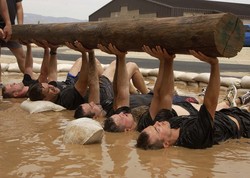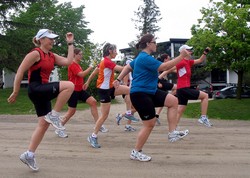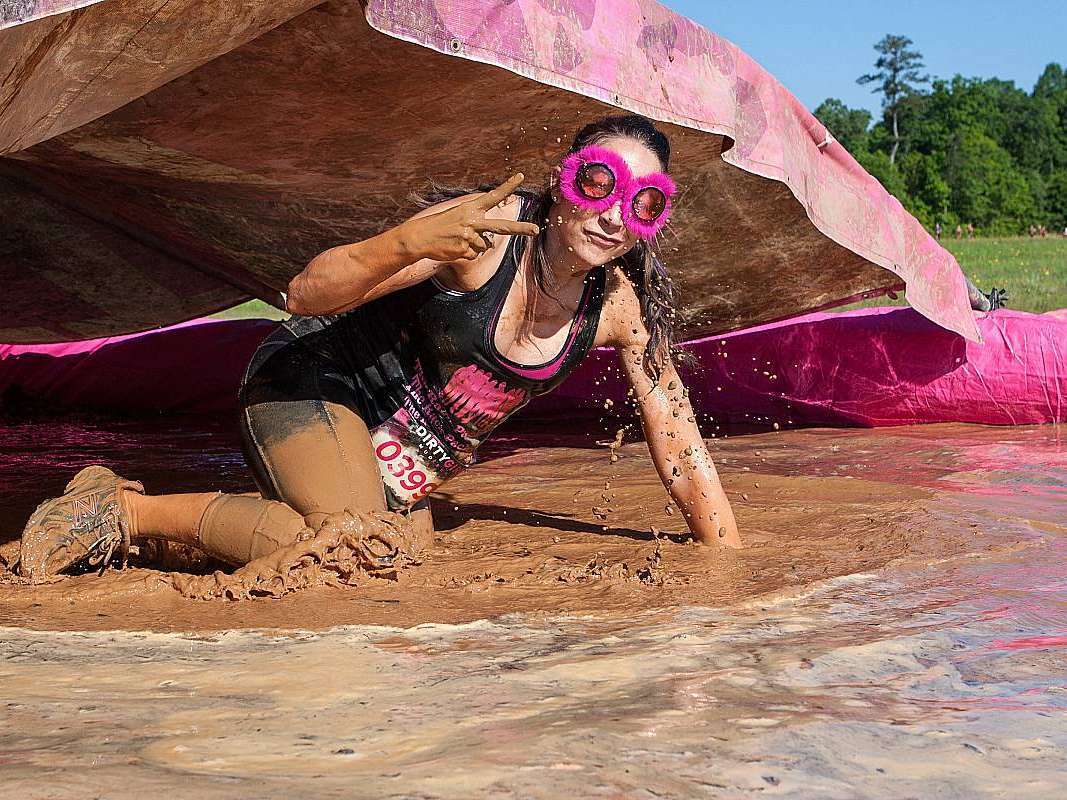 The number of muscles in the human body varies from about 640 to 850, depending on which expert you consult.
The number of muscles in the human body varies from about 640 to 850, depending on which expert you consult.
The question was asked, “What muscles are used in a triathlon?”
Here’s the answer:
Your muscles provide the movement necessary for swimming, biking, and running. How well your muscles do this comes down to how conditioned your muscles are to generate force within a wide range of motion. Weak, inflexible muscles can’t generate much power and velocity, and are more prone to injury.
This is why strength training and stretching are a part of triathlon training for most triathletes.
If you have a hard time climbing those hills on the bike or seem to have one injury after another or you are an over-40 triathlete, then strength training and stretching are especially important for you.
Okay, strength training first.
Strength Training For Triathletes
For starters, bigger is not better. The point is not to build size but strength. Most people’s view of strength training has been greatly influenced by the images of bodybuilders. Applying the strength training approach of a bodybuilder would result in a decrease in your performance as a triathlete. The bodybuilder is focused on building muscle mass (size) and symmetry (shape). This is the main reason why a triathlete might decide not to do strength training — because they fear adding muscle mass, which means more weight to pull through the water and carry up hills on a bike or while running.
The triathlete does strength training in order to increase their application of force or power in swimming, biking, and running. If done properly for a triathlete, the advantage of strength training is greater than the weight added, which typically does not cause any significant weight change.
Strength training for triathletes must incorporate the following 2 foundational principles:
 #1: Focus On The Primary Tri Muscles
#1: Focus On The Primary Tri Muscles
 Your “tri muscles” are those muscles that carry the bulk of the muscle load for swimming, biking, and running. For swimming, it’s your lats, chest, and shoulders. For biking and running, it’s your quads, hamstrings, glutes, and calves.
Your “tri muscles” are those muscles that carry the bulk of the muscle load for swimming, biking, and running. For swimming, it’s your lats, chest, and shoulders. For biking and running, it’s your quads, hamstrings, glutes, and calves.
Another key muscle group area is commonly referred to as your “core muscles,” which include the abdominal muscles, the lumbar region (or lower back), and the thoracic and cervical region of the spine. These muscles serve to provide stability, support, and a solid base for the rest of the body to function maximally.
Think of these core muscles as the centralizing place through which power generated in one region of the body is transferred to another. For example, the body roll of swimming is enabled at the core, so that the legs and shoulders rotate in unison. Core muscles can also transfer the power of your upper body down to your pedals as you climb on the bike. A strong core will help prevent injury on long downhill runs. Core strength training targets key muscle areas that help improve triathlon performance.
A simple strength training routine for triathletes would include the following:
-
Squats (quads, hamstrings, glutes)
-
Seated Row (upper and lower back, lower lats, biceps)
-
Bench Press (pectorals and triceps)
-
Lat Pull Down (lats, biceps)
-
Sit-up with Twist (ab muscles)
 #2: Periodize Strength Training
#2: Periodize Strength Training
Strength training for triathletes is not about what you look like in a mirror. Instead, it’s about preparing you for the best performance that you are capable of in your priority triathlon events.
Earlier, I stressed the importance of systematic and annual triathlon training, and strength training is an example.
In a nutshell the cycle of strength training for triathletes is as follows:
-
Building An Overall Strength Base: early off-season, 3 sessions a week, 3 sets of 20 reps for each exercise (focus on form or technique, gradually increase weight comfortably, train don’t strain)
-
Maximum Strength Increase: late off-season, 2 sessions a week, 3 sets of 10 reps (increasingly challenging your muscles to handle heavier loads)
-
Strength Maintenance: race season, 1 session a week, 3 sets of 12 reps (maintaining gains of previous phase, stressing muscles only on the last set for each exercise)
Keep in mind that your ab strengthening reps remain the same throughout, and can exceed the 20-rep count as needed.
There are many different ways a triathlete can do strength training. Some triathletes do a pure body-weight routine. For example, push-ups replace the bench press. Some people also prefer using weight-lifting machines as opposed to free weights.
However you do it, seriously consider having a strength training aspect to your triathlon training. Many triath
letes are currently transitioning into the “off-season” phase of training, which makes it a great time to begin.
Next: Stretch Training
I’m over 40 years old, but I don’t give up easily. It wasn’t too long ago that I was exploring the idea of doing my first triathlon. If I can do it, you can too! I'm proof that with a little determination and training, you can get a great deal of fulfillment participating in marathons, triathlons… even ultramarathons.




